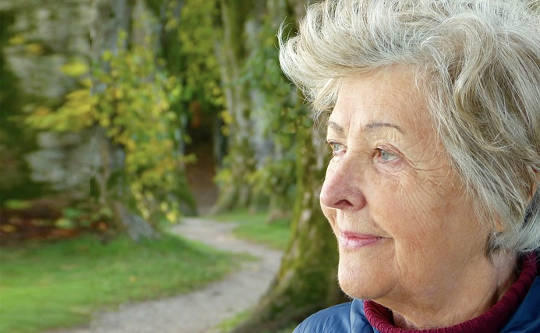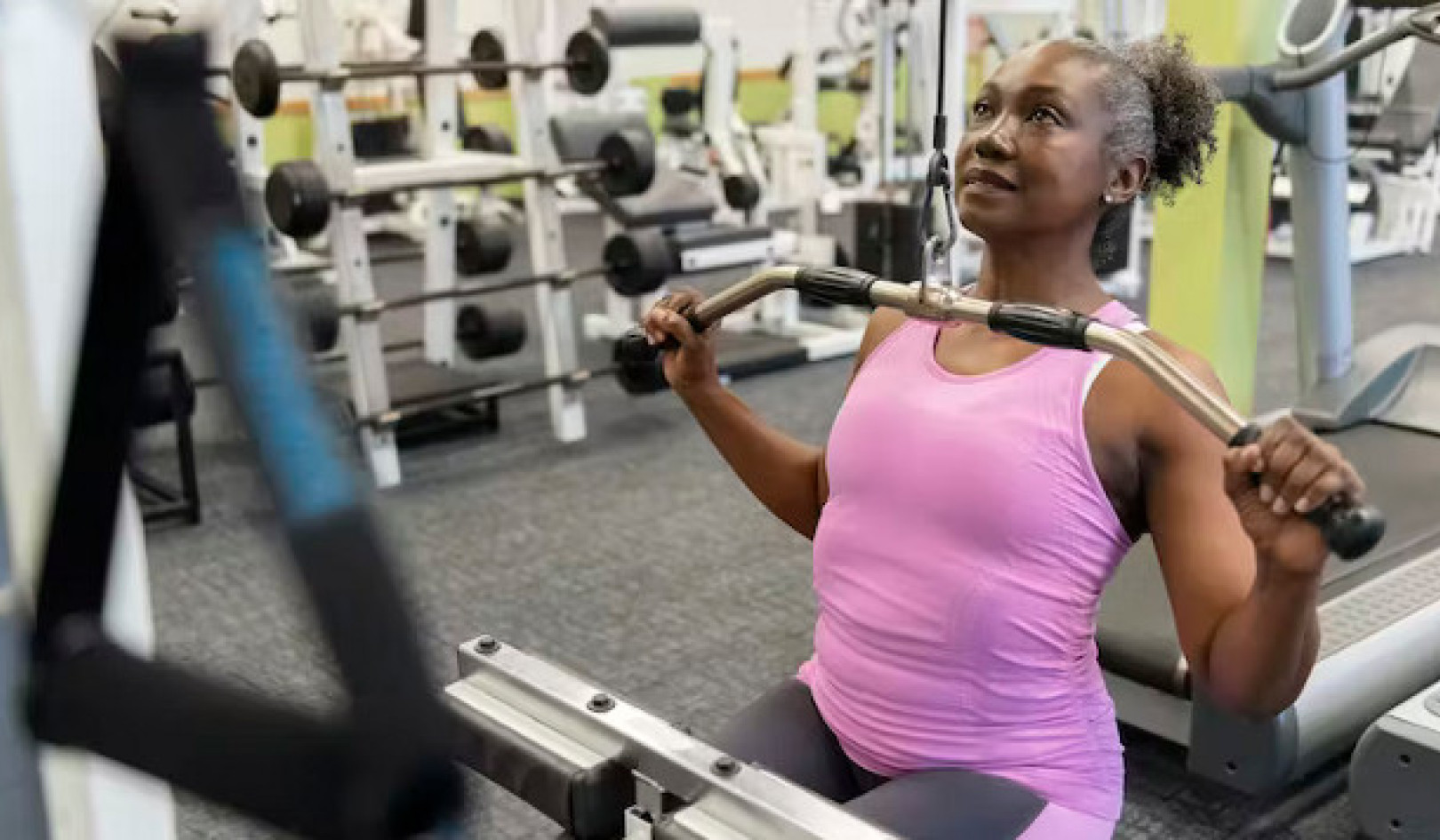
"I'm just warning you, the only way I am leaving this house is horizontally."
My new 92-year-old, 95-pound patient stood guarding her front doorway with her walker. I had just introduced myself as the occupational therapist from the agency assigned to her case. Josie was angry at her kids for insisting she have home care after her hospitalization for a hip fracture that resulted from a fall.
“I don’t blame you,” I said. “This is a great house. How long have you lived here?”
Her demeanor softened a bit and she allowed me through the entrance. “My husband built it over sixty years ago. The children were born and raised here. John died three years ago and I’ve managed just fine since then.”
"Deci ce s-a întâmplat?"
“I had a little fall in the bathroom. To tell you the truth I don’t remember what happened. One minute I was up and the next I was down. The kids are mad that I didn’t press the Lifeline, but it was very late and I didn’t want to bother anyone. So I lay there all night. My daughter found me in the morning. Now they are throwing ideas around about assisted living or me going to live with one of them. Over my dead body!”
After more than thirty-seven years working in the field of geriatrics, thirteen of them in direct home care, I have experienced hundreds of versions of that conversation. The actors are different; the script is the same. Mom and/or dad have lived in their home for a long time. They are starting to have difficulty getting around and managing the daily requirements of maintaining a house.
The decline is often so slow that every minuscule loss of function just becomes the new norm, and they adapt well enough so it doesn’t cause a problem. That is until a fall or a new health issue sends them spiraling and exacerbates their functional losses, and before anyone knows what hit them they have a crisis on their hands.
That’s when I get the frantic phone call.
“My mom is recovering from pneumonia and is so weak she can’t get off the toilet. What do I do?”
“Dad was outside doing yard work and the neighbor called to tell me he had trouble getting up his front steps. What do I do?”
“Mom fell getting out of the tub and was sprawled out on the floor all night with what ended up to be a hip fracture. My sister flew in and is staying with her until she heals, but we are not sure she can stay home alone anymore. I am about to go on a two-month sabbatical to Japan. What should we do?”
“My dad’s dementia has gotten so bad he doesn’t recognize any of his kids or grandchildren. He knows my mother is someone special to him but he does not know she is his wife. He needs twenty-four-hour supervision and we are afraid Mom will burn out. She insists on keeping him home, and all three of us kids live out of state with families and jobs. What do we do?”
“Our parents are driving us crazy. Mom is literally teetering around the house with her cane trying to cook and clean, and we know she is stiff and in pain from her arthritis. Dad can barely get up from his favorite chair where he sits all day watching TV. His drastic loss of hearing hinders his conversations with Mom and he often yells at her out of frustration. They are both an accident waiting to happen. What do we do?”
The answer to “What do we do?”
Când problema „Cât de sigură este mama sau tata?” și „Pot rămâne acasă?” apare, de multe ori provoacă un conflict între copii și părinți. Este firesc să vizualizăm situația prin propriul nostru obiectiv, creând astfel versiuni diferite și uneori ciocnitoare ale aceleiași realități.
The answer to “what do we do” requires that everyone tries to see the situation through their loved ones’ eyes, with respect, and that everyone gives a little.
My experience reveals that most of the time the parents are not being purposefully argumentative. We often picture ourselves as the same as when we were young, ignoring signs of aging that have become part of our everyday life. We discount that pain in our backs when we lift something heavy or the twinge in our knee when we go up the stairs. We overlook the fact that our energy level isn’t the same as it used to be and continue to plow on through our day. It’s the same with mom and dad, who likely are at least twenty years older than “us kids.” The years have taken a toll on their physical and cognitive abilities, but if it’s come on slowly they probably didn’t notice it happening.
As much as you are sure they are not totally safe and they are having difficulty getting around the house and managing, mom and dad are thoroughly convinced they are fine. And as much as you plead and cajole them to make some changes, in the end it is their right to dismiss your suggestions, recommendations, pleadings, and threats.
So how do you resolve this conflict?
The answer is to somehow meet in the middle. Make a deal. Get them to agree to modify their surroundings so they poate să stay home, but in a living environment that is more accessible, safer, and easier to successfully navigate, reducing everyone’s stress level and hopefully leading to a resolution that makes everyone happy.
Remember, your parents are grown-ups and have managed to do a pretty good job progressing to where they are today. They deserve independence, autonomy, and respect. And they, in turn, need to be open to suggestions that will improve chances for preventing falls and promoting safer mobility in and out of their home. Everyone has to give a little.
AARP (American Association of Retired Persons) states that “more than 90% of seniors prefer to age in place; staying in their own homes, continuing to make independent choices and maintaining control over their lives.” That said, many of the people in this age group that I have worked with over the years are reluctant to admit that living in their home has become increasingly difficult. Most often they will not initiate any significant life changes, so it will be up to those who care for them and provide support to get the ball rolling.
An orderly and well-maintained house is a safe house. To maximize health and safety, it is helpful to start with decluttering. Clutter takes up precious space and can actually be hazardous to your parents’ health. It accumulates excess dust and makes it harder to move around the house safely. And the disorganization contributes to stress by making us feel out of control.
Occupational therapists (lovingly called “OTs” for short) are experts in studying the ease and safety in which their patients perform self-care activities. These activities are called “activities of daily living” (ADLs) or “instrumental activities of daily living” (IADLs). ADLs and IADLs are anything people do from the minute they wake up in the morning until they go to bed at night. This includes feeding oneself, dressing, bathing, toileting, grooming, hygiene, and functional mobility (walking and transferring from surface to surface). IADLs are a bit more complicated in that they include making meals, shopping, managing medications and transportation, and managing the home.
Adapting to the challenges
Many seniors desire to remain in their homes where they raised their families and created so many wonderful memories, but those desires are often derailed by declining physical and cognitive abilities. As we age we must adapt to the challenges of performing the activities of daily living that we used to take for granted, such as climbing stairs, bathing, preparing meals, and managing the house. Intellectually, we know that being proactive and planning ahead is the way to achieve the best possible results.
Even with the best of intentions, we are often unsure how to start the process, which results in the situation managing us instead of the other way around. I often hear the analogy when dealing with senior parents that now “we” have become the parents and they have become the “kids.”
Sometimes we lose sight of the impact our parents have had on our entire life. We may have taught them how to use a smartphone or Skype with their grandchildren, but let’s not forget that they taught us hygiene, manners, and basic life skills.
Remember that your best chance for success is to work cooperatively with mom and dad, not to lose your patience, and to always treat them with the respect they deserve. It’s a win-win. They’ll be safe. You’ll be sane.
© 2018 de Lynda G. Shrager. Toate drepturile rezervate.
Retipărit cu permisiunea.
Publicat de Bull Publishing. www.bullpub.com
Sursa articolului
Age in Place: Un ghid pentru modificarea, organizarea și descuamarea casei mamei și tatălui
de Lynda Shrager OTR MSW
 Age in Place: Un ghid pentru modificarea, organizarea și descuamarea acasă a mamei și a tatălui este un ghid pas cu pas, cameră cu cameră, pentru modificări simple și adesea imediate, care pot ajuta persoanele în vârstă să își facă casele mai sigure și mai ușor de navigat. Este conceput pentru a ajuta persoanele în vârstă și îngrijitorii lor să abordeze împreună aceste noi provocări, pentru a face viața acasă mai sigură și mai ușor de gestionat.
Age in Place: Un ghid pentru modificarea, organizarea și descuamarea acasă a mamei și a tatălui este un ghid pas cu pas, cameră cu cameră, pentru modificări simple și adesea imediate, care pot ajuta persoanele în vârstă să își facă casele mai sigure și mai ușor de navigat. Este conceput pentru a ajuta persoanele în vârstă și îngrijitorii lor să abordeze împreună aceste noi provocări, pentru a face viața acasă mai sigură și mai ușor de gestionat.
Faceți clic aici pentru mai multe informații și / sau pentru a comanda această carte sau cumpărați Versiunea Kindle.
Despre autor
 Lynda Shrager, OTR, MSW, CAPS este terapeut ocupațional înregistrat, certificat de consiliul național, asistent social la nivel de masterat și specialist specializat în îmbătrânire în loc (CAPS) cu mai mult de treizeci și șapte de ani de experiență în domeniul geriatriei și mai mult de treisprezece ani lucrând cu persoanele în vârstă în casele lor . În 2009, Lynda a devenit un cronicar pentru de zi cu zi de sănătate (dailyhealth.com), unul dintre principalele site-uri web din lume pentru sănătatea consumatorilor. Lynda își combină expertiza ca terapeut ocupațional, asistent social la nivel de masterat, organizator profesionist și specialist certificat în domeniul îmbătrânirii pentru a-și urmări pasiunea de a oferi îngrijiri terapeutice în mediul de acasă al pacientului și de a-i educa pe îngrijitorii lor. Aflați mai multe la elsehealthy.com.
Lynda Shrager, OTR, MSW, CAPS este terapeut ocupațional înregistrat, certificat de consiliul național, asistent social la nivel de masterat și specialist specializat în îmbătrânire în loc (CAPS) cu mai mult de treizeci și șapte de ani de experiență în domeniul geriatriei și mai mult de treisprezece ani lucrând cu persoanele în vârstă în casele lor . În 2009, Lynda a devenit un cronicar pentru de zi cu zi de sănătate (dailyhealth.com), unul dintre principalele site-uri web din lume pentru sănătatea consumatorilor. Lynda își combină expertiza ca terapeut ocupațional, asistent social la nivel de masterat, organizator profesionist și specialist certificat în domeniul îmbătrânirii pentru a-și urmări pasiunea de a oferi îngrijiri terapeutice în mediul de acasă al pacientului și de a-i educa pe îngrijitorii lor. Aflați mai multe la elsehealthy.com.
Cărți conexe
at InnerSelf Market și Amazon























